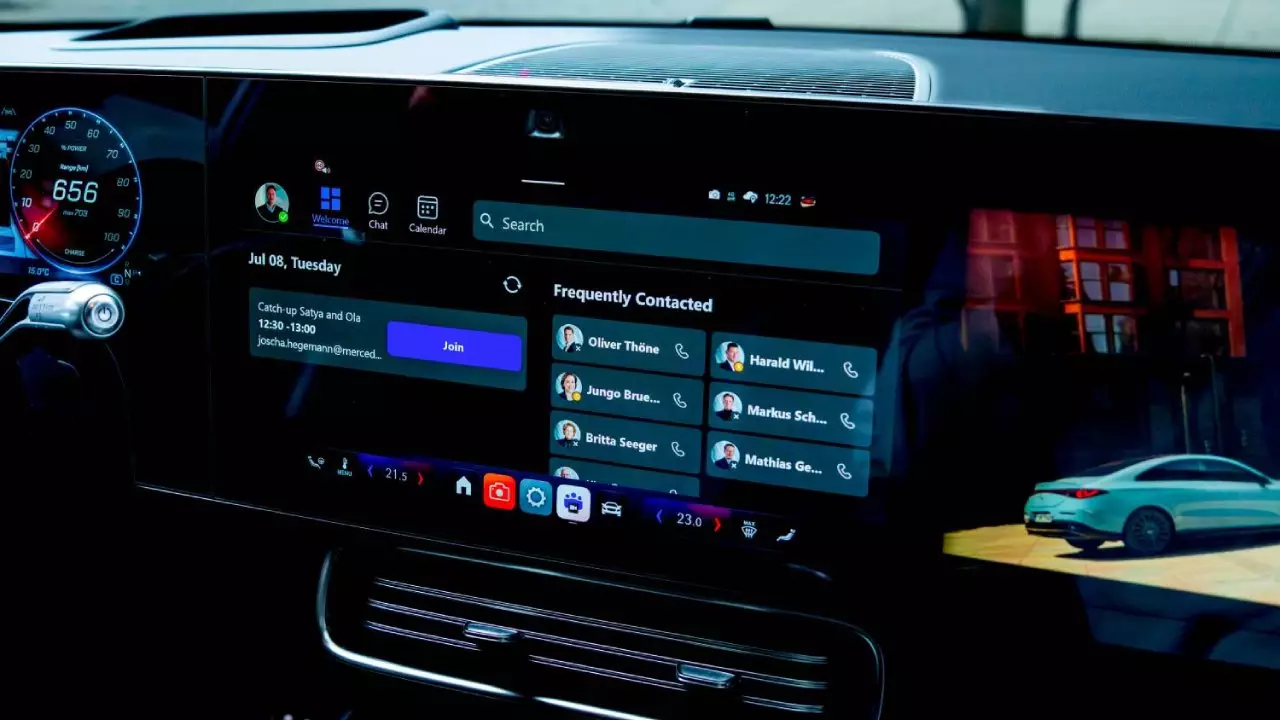Mercedes-Benz’s latest update underscores a deliberate move to position their vehicles as the epitome of luxury working environments, blurring the line between traditional mobility and the digital workspace. By allowing live video feeds from in-car meetings during driving, Mercedes is attempting to cater to high-performance professionals eager to showcase their relentless work ethic, regardless of physical boundaries. While the company lauds this feature as a breakthrough in combining safety with productivity, the reality is more complex. The idea advocates for a seamless integration of work and life, but it risks exposing drivers—and by extension, passengers and others on the road—to significant distractions and unintended disclosures.
This push towards a connected and ultra-efficient vehicle environment reveals a fundamental misunderstanding: the car’s primary function remains safety, not telepresence. The capacity to broadcast oneself while navigating at speed is not only questionable from a safety perspective but also from an ethical standpoint. It reflects a culture that often equates busyness with virtue, incentivizing drivers to appear always “on” and productive. If technology becomes a mask for reckless behavior or accidental exposure, the intended benefits of enhanced connectivity quickly turn into liabilities.
Furthermore, Mercedes’s emphasis on enabling drivers to participate visually in meetings while driving can create a false sense of security. The automaker insists that safety protocols, such as automatic camera deactivation when the vehicle moves, protect the driver. But the potential for misuse or visual distraction remains high. The driver might be tempted, consciously or unconsciously, to glance at the video feed, compromising focus no matter what safeguards are in place. The line between legitimate productivity and hazardous distraction becomes dangerously blurred—a reality that should not be dismissed lightly.
Beyond Safety: The Distraction Dilemma and Social Expectations
The in-car Teams update appears to cater less to practical needs and more to societal expectations of constant availability. It’s reminiscent of a broader cultural trend where showing off one’s busy schedule becomes a status symbol. The ability to join meetings visually from the highway or the driveway signifies a new level of dedication—possibly a new form of digital showboating. In this context, Mercedes’s feature might serve as a badge of honor for those eager to demonstrate their workaholism, rather than a genuine productivity enhancement.
Yet, what is glaringly missing from the conversation is a serious discussion on privacy and professionalism. The potential for unintended exposures—be it nasal exploration, accidental camera activation, or other personal moments—raises alarms. Such exposures could have repercussions on personal dignity, professional reputation, or even data security if sensitive information is captured inadvertently. The convenience of having a presence during meetings does not justify the risks embedded in broadcasting yourself from a moving vehicle.
Moreover, the focus on enabling seamless voice commands and AI integration, such as Microsoft 365 Copilot, emphasizes efficiency but neglects the vital need for drivers’ undivided attention. AI-driven summaries of emails, querying client preferences, and managing tasks might sound impressive, but in reality, these features could contribute to cognitive overload. The illusion that drivers can multitask safely is fundamentally flawed; it’s a distraction in its own right—one that the industry seems increasingly willing to accept in the name of innovation.
The Irony of a Luxury Car That’s Part Office, Part Showroom, and Part Danger Zone
Mercedes’s ambition to fuse luxury, utility, and cutting-edge technology is both fascinating and concerning. The company aims to craft vehicles that are not only symbols of status but also extensions of the modern professional’s digital life. However, this fusion risks turning a vehicle into a spectacle of overreach—an environment where safety, privacy, and professionalism could be compromised for the sake of perceived productivity.
While AI-powered tools promise convenience, they also introduce vulnerabilities: errors, miscommunications, or even hacking. In a setting where lives are at stake, such risks rival the innovations’ allure. The promise of a futuristic car with generative AI and live video conferencing seems tantalizing, but the true cost could be a compromised sense of safety and dignity. Mercedes’s attempt to lead the industry in this space should be tempered with humility and a clear-eyed view of the practical and ethical challenges ahead.
In the end, these developments reflect a broader societal obsession with demonstrable busyness—where appearing perpetually occupied holds more value than the sheer quality of work or safety. Vehicles, once solely transportation devices, are morphing into mobile status symbols and status-showing platforms. Whether this evolution benefits drivers or endangers them remains an open question—one that demands careful scrutiny beyond the shiny veneer of technological innovation.

